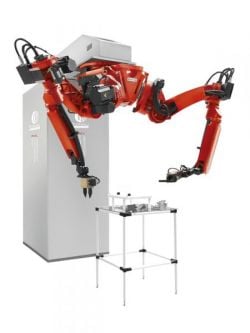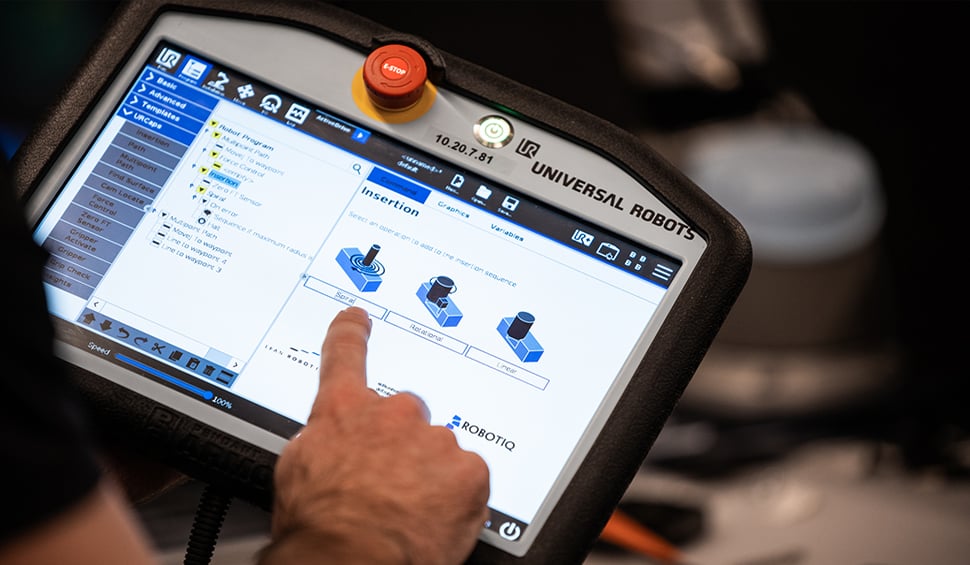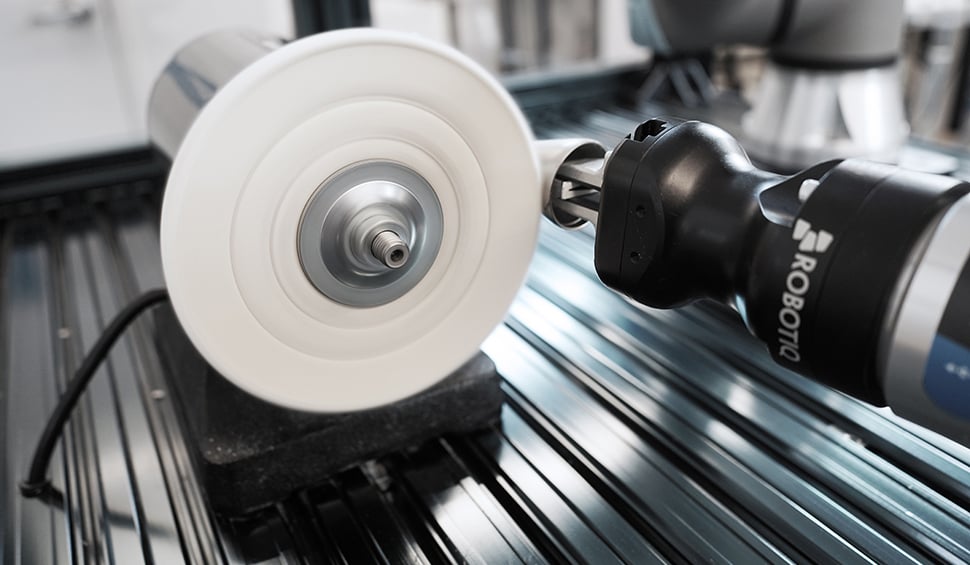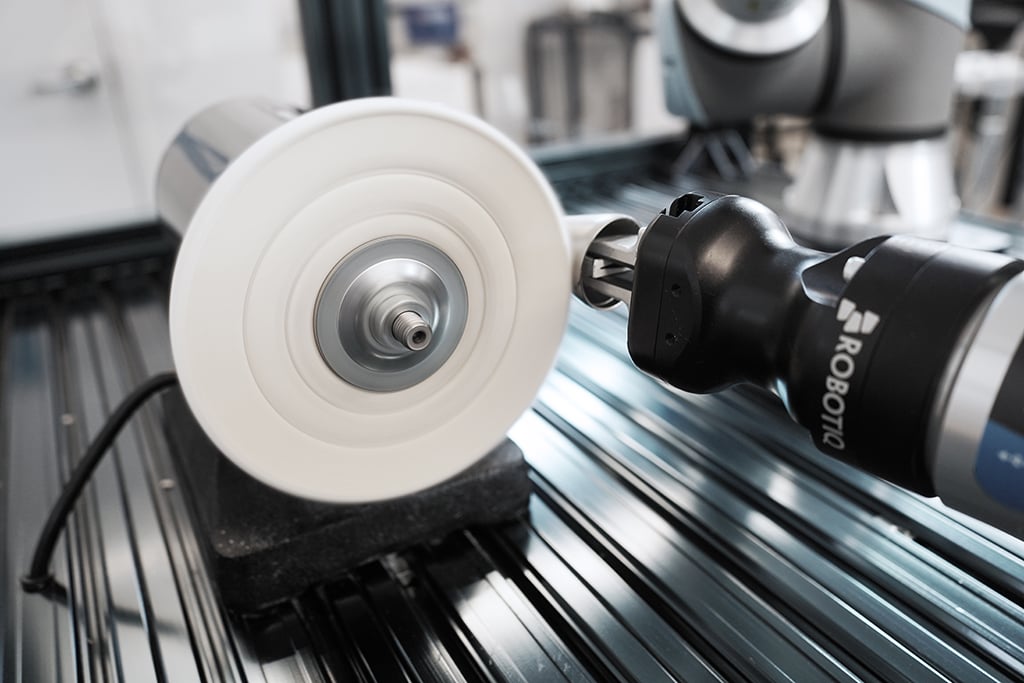High-Tech Robotic Assembly Cell

Posted on Mar 18, 2015 1:37 PM. 7 min read time
I am trying to imagine what the work floor of the future will look like in a couple years from now? As it is shaping up at the moment, the trend is to give a lot of tasks to robots. Applications, such as assembly tasks, can sometimes be repetitive for human workers and this invites a lot of errors that result in inconsistent production. With the addition of robots in a work cell, the production process can be a little more arduous to install, but can have a quick payback by establishing consistent production. SME robotics has designed a futuristic (though not that futuristic anymore) robotic cell to show what a robotic assembly might look like.
Even if the application seems slow and not all that efficient, you should consider that it is an example of what can be done in the industry. This is not an actual application, however, the video exposes some interesting specifications for our imagined future robotic cell. There are a couple of points that I would like to highlight.
Vision
I don't have all the details on the robotic cell, but what I see is that there are several vision systems that have different purposes. If you look at the first vision system (0:30 seconds into the video), it is monitoring the entire robotic cell. Programmers have predefined the work zones and/or safety zones. This allows the robotic system to start or stop depending on the human worker's position in the robotic cell. Most of the time, this kind of vision system is recording the working space in 3D which allows for the precise monitoring of the position of the worker(s) or the robot arm(s).
The second vision system (0:40) monitors the gestures of the people and eventually his/her position in relation to the robot and consequently enables the worker to control the cell without a teach pendant. In this scenario, SME robotics uses an Xbox 360 Kinect (you may have one at home) for 3D vision.
The third vision system (1:40) is used to monitor the different objects on the worktable. This vision system only needs to be in 2D since it only has to locate the X and Y position of the objects. However, the Z axis can be set by the operator or embedded in the robot program.
Safety
As I said in the last section the vision systems are considered a safety system. In fact, in some cases the vision system can be programmed to slow down or literally stop the robot's motions according to the position of the worker. These kinds of safety devices lead to another important safety feature of this robot cell...
The cell uses industrial robots. So... the employee is working alongside industrial robots without any physical barriers. Thus, this application would be considered a collaborative robot application without the collaborative robot. Since there is a vision system monitoring the position of the worker there is no need for physical barriers and the application still respects ISO 10218 for robot safety. You should notice that the worker has to be in a specific location for the robot to start. This has all been considered in the risk assessment.
Robots

Some of you may have noticed and are asking: Why do they used such big robots for such a small assembly? In fact, in my opinion it seems like the robots are a bit oversized for the application, however you should consider the following factors.
1. This is R&D. SME robotics is a lab that creates cells that can be used in different applications. So, these robots are not designed for this particular application.
2. Payload: Various tools are used in the process and thus the robots require a certain payload to achieve smooth motions. A collaborative robot might have been too weak to handle the tools plus the parts.
3. Accuracy: As a rule of thumb, an industrial robot is more accurate than a collaborative robot.
4.Comau: The project is supported by Comau, so obviously, they will use Comau robots. Comau does provide a built-in dual-arm cell, so why not use it instead? Probably availability, but I'm stumped here.
To highlight the vision systems it is a good point to use industrial robots for collaborative applications, this way SME robotics shows the integrated safety systems which they would not have needed to use if they were just using a collaborative robot.
Robotic Accessories
The robot is using two parallel grippers to grasp the different objects. You can see that the gripper fingertips have been modified to fit this particular application (3:22). I don't recognize any FT sensors but in some applications, like inserting spline shafts, they can be helpful.
Another interesting feature of the video is the use of a wireless tablet to control and program the robot. This is the next step in robot programming and it is coming really fast.
The table and setup is a very important component of the cell. In this case, the cell designers have used very simple shapes to create an efficient working cell. With a simple machined polymer plate, they create different platters that can be easily grasp by either the worker or the robot and which allows for an great positioning of the parts. Fast and easy setups like this can make all the difference in a good production application.
Even if the cell is considered futuristic it doesn't means that it can't be adapted right now to your applications. You can take ideas from this video and adapt them to what you are doing right now. Stay tuned to have more information on what SME robotics will develop in the near future or consult our past blog posts on this consortium.







Leave a comment